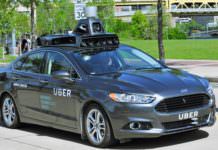One of the humanity’s dreams can soon become a reality. A dream of a driverless future looked far away just five years ago, but it soon could enter our lives, putting all (or most) control at the hands of AI, a driverless future. There are two main philosophies – the one Google preaches, is a car that will not need assistance from the driver, where the car is completely autonomous and the other from the manufacturers like Tesla and Toyota, that see the future of driving at the hand of smart cars, but still with an occasional input from the driver (or better to say passenger?).
Two Sides Of The Same Coin
A driverless future doesn’t look the same. While one side is supporting a complete level four autonomy, a level of autonomy where a driver becomes basically a passenger and where car’s AI take care of the driving, the other side talks about level three autonomy where a car is driving most of the time, but in the case of a sudden change of external conditions the car will give control to the driver. It’s simple, technology is still not advanced enough to offer a full proof concept of level four autonomy, and there will be a while before we are able to just sit down, relax and give the car all the control. On the other side, many features included in the concept of level three autonomy are already here; ready to be used, with just some issues we need to solve before we can start implementing this technology into our cars. More on AI here
Potential Issues With The Driverless Future
Of course, technology issues are not the only problem a potential driverless future has. There is an interesting issue of liability. If you, for instance, “drive” a driverless car and that car causes an accident, who will be responsible for it, you or the company that made the car? There is also the question of employment that could soon be taken over by driverless vehicles, like taxi and trucking services and public transportation. Will we just take the jobs of numerous people working in these industries and give them to AIs, or will we find a way to make the transition to driverless technology as painless as possible? What about the ability of these cars to effectively maneuver human drivers, unlike AI’s some human movements are not base on calculated logic, instead on feeling and emotion. This type of reactive driving is almost impossible for even an advanced AI to predict, leaving a big gap in safety standards. Only time will tell because as it stands the driverless technology is significantly more advanced than today’s regulation, and it is obvious that countries will have to adjust the laws and regulation before driverless cars become an everyday reality. I think we have a long waiting period for the world to catch up!
There is so much potential with driverless car technology, but if we don’t solve the issues facing it, that future may never happen. So, instead of trying to advance technology further and further, we should first make sure that our society, our laws, regulations, roads, our entire system is ready for it before it arrives.

















